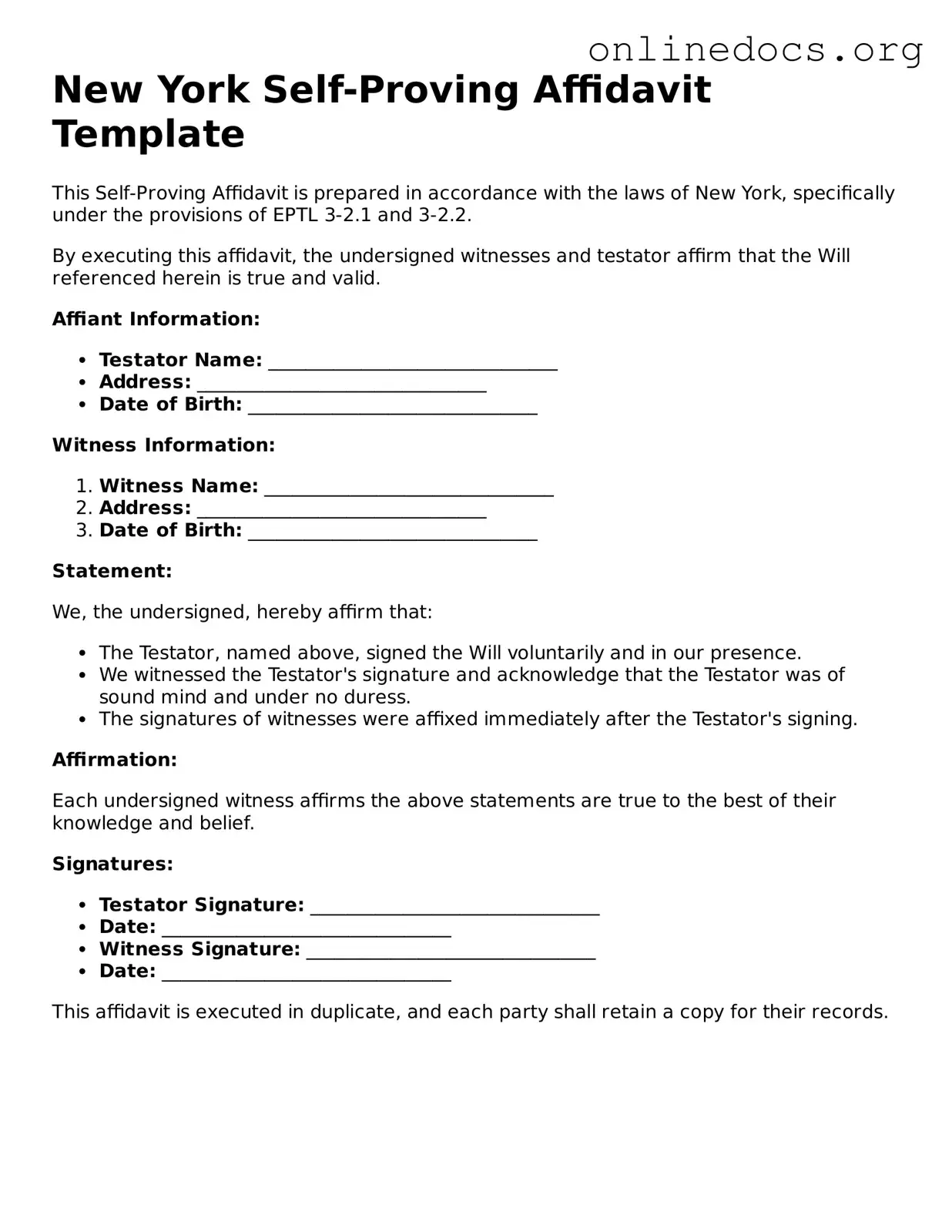When filling out the New York Self-Proving Affidavit form, many individuals make common mistakes that can lead to complications in the estate planning process. Understanding these pitfalls can help ensure that your intentions are clearly documented and legally recognized.
One frequent error is failing to have the document signed in the presence of a notary public. In New York, it is essential that the testator and the witnesses sign the affidavit in front of a notary. If this step is overlooked, the affidavit may not be considered valid, which could create challenges for the estate after the testator's passing.
Another mistake is not including the correct information about the witnesses. The affidavit requires that witnesses provide their names and addresses. Omitting this information can lead to questions about the legitimacy of the will, potentially causing delays or disputes among heirs.
People also often forget to ensure that the witnesses are disinterested parties. In legal terms, this means that the witnesses should not stand to gain anything from the will. If a witness is a beneficiary, it could invalidate their testimony and create issues during the probate process. This is a crucial detail that should not be overlooked.
Additionally, some individuals neglect to review the completed affidavit thoroughly before submission. Mistakes in spelling, dates, or other critical details can lead to confusion. Taking the time to double-check the form can prevent unnecessary complications later on.
Lastly, failing to keep the affidavit in a secure and accessible location is a common oversight. After completing the form, it should be stored with other important estate planning documents. If the affidavit cannot be found when needed, the entire process may become more complicated, potentially undermining the testator's wishes.
